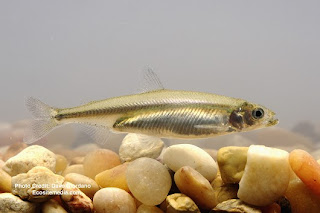Because of its one-year life cycle and relatively low fecundity, it is very susceptible to changes in the environmental conditions of its native habitat.
The delta smelt is a pelagic (lives in the open water column away from the bottom) and euryhaline species (tolerant of a wide salinity range). It has been collected from estuarine waters with salinities up to 14 parts per thousand.
As a result of its one-year existence cycle and comparatively flat fertility, it is truly powerless to updates in the ecological states of its local environment. An imposing number of these updates have advanced to a fluctuating citizenry decay, as measured inasmuch as 1959. Endeavors to ensure the imperiled fish from further decay have centered on constraining or adjusting the extensive-scale pumping exercises of state and federal water ventures at the southern finish of the estuary.
Endemic
The delta smelt is endemic to the Sacramento Delta, California, where it is distributed from the Suisun Bay upstream through the Delta in Contra Costa, Sacramento, San Joaquin, Solano and Yolo counties. The delta inhaled is semelparous, living one year and burning out following its first spawning. Delta inhaled spawning happens in spring in current channels and tidally impacted backwater swamps upstream of the intermingling zone where saltwater meets freshwater.
The Sacramento and San Joaquin currents then transport the delta inhaled hatchlings downstream to the intermingling zone, regularly spotted in the Suisun Bay. Junior delta inhaled then food and develop in the blending zone before beginning their upstream spawning relocation in late fall or early winter.










0 comments:
Post a Comment